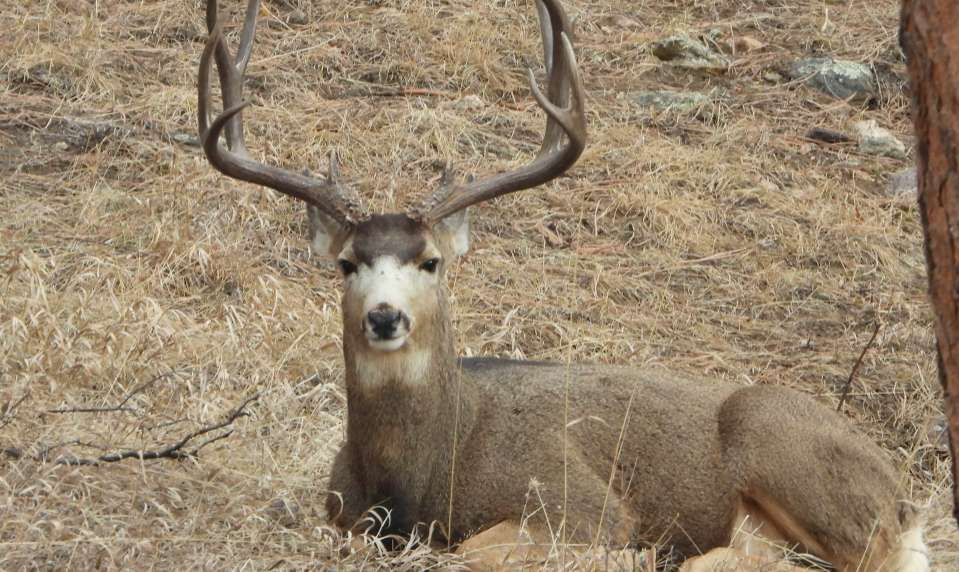For deer hunters and wildlife enthusiasts, understanding the differences between blacktail and whitetail deer is essential. While they share some similarities, these two species have distinct traits, habitats, and behaviors that set them apart. Whether you’re planning a hunt or just looking to expand your knowledge, this guide will break down the key differences between blacktail and whitetail deer.
1. Physical Differences: Size, Color, and Antlers
Size and Body Structure
- Whitetail Deer (Odocoileus virginianus): Generally larger than blacktails, whitetail bucks typically weigh between 150–250 lbs, with some reaching over 300 lbs in prime conditions. Does are smaller, averaging 90–150 lbs.
- Blacktail Deer (Odocoileus hemionus columbianus & Odocoileus hemionus sitkensis): Smaller and more compact, blacktail bucks usually range from 90–200 lbs, with does averaging 65–130 lbs.
Coloration and Coat
- Whitetails have a reddish-brown coat in summer and transition to grayish-brown in winter, with a distinct white underside and tail.
- Blacktails get their name from their dark, nearly black tails, which contrast with their brownish-gray bodies. Their coats are often darker than whitetails, helping them blend into dense forest environments.
Antler Structure
- Whitetail bucks grow antlers with a main beam and tines branching upward, forming a distinct “typical” shape.
- Blacktail bucks have antlers that fork as they grow, similar to mule deer, with a more compact and spread-out structure.
2. Habitat: Where They Live
Whitetail Deer Habitat
- Found across most of North America, from dense forests in the East to open plains in the Midwest and the deep South.
- Prefer mixed forests, agricultural land, and river bottoms, where they have access to food sources like acorns, soybeans, and corn.
Blacktail Deer Habitat
- Primarily located in the Pacific Northwest, Northern California, and parts of Alaska & British Columbia.
- Thrive in dense coastal forests, rugged mountains, and thick undergrowth, making them more elusive and difficult to spot.
- Two subspecies exist:
- Columbian Blacktail (O. h. columbianus)—found along the West Coast from California to British Columbia.
- Sitka Blacktail (O. h. sitkensis)—smaller and native to Alaska and coastal Canada.
3. Behavior and Adaptations
Movement Patterns
- Whitetails are more adaptable and can flourish in open terrain, where they use speed and agility to escape predators.
- Blacktails are reclusive, sticking to thick cover and using their stealth and terrain familiarity to avoid predators.
Diet Differences
- Whitetails feed on a mix of agricultural crops, acorns, grasses, and shrubs.
- Blacktails rely more on native vegetation, including ferns, berries, lichens, and evergreen browse, due to their coastal forest habitat.
Predator Evasion
- Whitetails use speed and bounding escape routes, often utilizing open areas and wood lines.
- Blacktails are masters of stealth, using thick timber and steep terrain to avoid threats.
4. Hunting Challenges and Techniques
Whitetail Hunting
- Typically hunted from tree stands or ground blinds near food plots, bedding areas, and trails.
- Whitetails are patternable, meaning hunters can track their movements using game cameras, rubs, scrapes, and food sources.
- Prime hunting strategies: Rut-phase hunting, using calls, rattling, and baiting (where legal).
Blacktail Hunting
- Considered one of the hardest deer species to hunt due to their secretive nature and dense forest habitats.
- Still-hunting and spot-and-stalk methods are common, as sitting in a tree stand is less effective in thick terrain.
- Best seasons: Late summer and early fall during their high-movement periods.
5. Conservation and Population Status
- Whitetail populations are booming, with an estimated 30 million+ in North America. Regulations help manage numbers, as they adapt well to human expansion.
- Blacktail deer numbers are lower, and habitat loss has impacted populations in some regions. However, they remain stable in remote coastal forests.
Conclusion: Which is More Challenging to Hunt?
Both whitetail and blacktail deer offer unique challenges for hunters. If you prefer patterning and strategic setups, whitetails offer consistent action across a variety of terrains. However, if you enjoy the thrill of tracking an elusive and ghost-like deer, blacktail hunting is a true test of skill.
Whether you’re in the dense Pacific Northwest forests chasing blacktails or in the open Midwest fields targeting whitetails, knowing the differences between these two deer species will make you a more informed hunter and outdoorsman.


